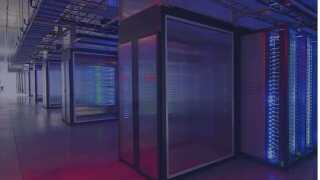
Major digital advances are leading to a growing need for efficient edge-computing models. Karsten Winther, president for the EMEA region at data centre equipment and services provider Vertiv, explains how the edge is evolving.
We’re seeing more talk over time about advanced technologies like AR and VR, as well as the metaverse: how important will the adoption of edge computing be to support all this?
These developments require a robust edge-computing infrastructure, as speed of deployment and resiliency are key. It’s no surprise that 34% of respondents in an edge survey by Vertiv are planning or already have significant edge deployments in progress.
However, the data centre industry has struggled to consistently define or categorise edge deployments – a necessary step in understanding site-specific equipment and design standardisation that can increase efficiency, reduce costs and streamline deployment.
Our Edge Archetypes 2.0 report published last year identifies the most significant edge characteristics to help understand what physical form such infrastructure is taking. These efforts are critical in supporting our customers and the data centre industry at a time when standardisation and quick edge deployment are key. As the metaverse evolves, we will need to assess if or how models differ from other edge deployments.
What steps should organisations take to prepare for growth at the edge?
The first step is identifying business needs and thus the most appropriate edge strategy, including the data-centre models required for different use cases. We have identified four categories of use case: data-intensive, human-latency-sensitive, machine-to-machine-latency-sensitive and life-critical.
The emerging uses have more demanding requirements, and must be configured based on latency, bandwidth, availability and security needs.
Channel partners will also be crucial in supporting organisations with quick and smooth edge-computing deployments. This is because it will require a whole host of systems in addition to compute – including racks, power distribution, UPS [uninterruptible power supplies], cooling and IT management technologies, ideally delivered as integrated, prefabricated and modular infrastructure solutions. The IT channel is ideally placed to support growth at the edge because it has the breadth to scale and enable rapid deployment.
How is Vertiv supporting edge deployments?
We are constantly enhancing our tools to ensure the Vertiv Partner Program is as leading-edge as our portfolio. The focus on accessible digital tools has led to developments including a new, enhanced product configurator that provides reference designs to ensure equipment compatibility. It offers a fast, easy and hassle-free method for partners to build solutions that meet their customers’ edge-computing needs.
Such models give IT channel partners a head start on project configuration to streamline their efforts and increase their margins.
With continued cloud, edge and 5G growth, how are data centres facing increased pressure to meet sustainability targets?
Sustainability is no longer a “nice to have”, and we’re seeing customers turn to us for new technologies to help them improve efficiency.
For example, we are supporting Telefónica to slash energy consumption per traffic unit by 90% in 2025 compared to 2015. We are also helping Telefonica to reach the goal of reducing CO2 emissions in its value chain by 39%, and reducing energy usage from data-centre cooling by up to 85%.
Overall, Telefónica’s Concepción building in Madrid has achieved savings of 2.6GWh, cutting €230,000 on the site’s electricity bill since the project was deployed in late 2019.
How else are you helping data centres to lead on increasing the use of renewable energy?
At Vertiv, we recently launched an innovative Dynamic Grid Support feature for UPS. This allows energy-intensive industries to utilise UPS systems as energy management centres, allowing adoption of renewable energy solutions, such as wind and hydro.
Ultimately, smart-grid-ready UPS allow data centres to support the electrical grid, giving a boost to renewable energy and sustainability initiatives. In a groundbreaking recent global survey by research group Omdia, 90% of respondents expected the deployment of these kinds of UPS within four years, with 54% expecting this within two years.




